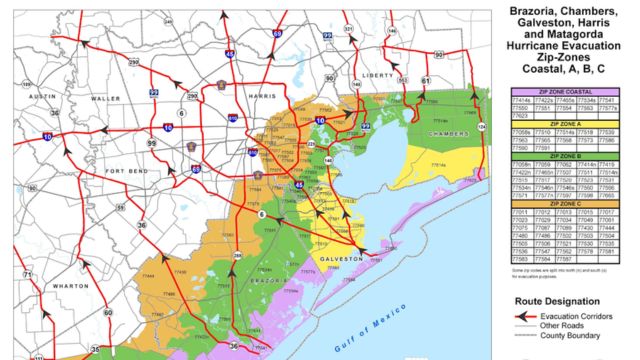Galveston officials are warning locals about a significant change they might observe if a tropical cyclone poses a threat to the area as the hurricane season in the Atlantic basin gets underway.
Authorities now intend to increase the window for issuing evacuation orders from 36 hours prior to the arrival of destructive winds and flooding to 60 hours prior to the anticipated consequences of a storm.
Although temporary, the modification is being implemented because of a large-scale construction project along Interstate 45, the main evacuation route in the area.
Given the possibility of delays along the highway, the city’s emergency management said the updated timeframe is intended to guarantee a more effective evacuation procedure.
Multibillion-dollar improvements are being made to the region’s primary roadway with the goal of both widening the interstate and strengthening its resistance to flooding.
Despite the fact that the route is still accessible, Emergency Management Coordinator Byron Frankland is worried that an accident or stalled car during a mass evacuation might cause traffic to almost completely stop, which could prolong the time it takes to move tens of thousands of people inland by hours.

Residents barely recall a few occasions when notices were sent out, making evacuations from the possibility of a hurricane’s direct blow uncommon.
Galveston Island’s 52,000 permanent people must depart, along with millions of others in the nation’s second-most populous state, due to a serious threat to the Southeast Texas coastline.
Millions of Texans were forced to flee higher ground after major hurricanes like Rita, Ike, and Harvey, which caused hours of traffic jams and delays on the roadways. Frankland hopes to prevent this situation with the 60-hour warning.
Read Also: New Texas Law Requires State IDs, Records to Show Birth-Assigned Sex
The State of Texas Emergency Assistance Registry is a free initiative that enables citizens who might need additional assistance during a disaster to register ahead of time in order to support vulnerable populations.
Participation in the STEAR program helps planners understand the need for specialized resources, such wheelchair-accessible buses and medical transports, but it does not ensure services during an emergency.
Officials advise anyone in need to enroll in the STEAR program as soon as possible, before a storm strikes, and residents can do so online or by calling 211.
The extended 60-hour evacuation window, according to Frankland, will last until at least 2026, when improvements to Interstate 45 should be completed enough to accommodate a large-scale evacuation.



